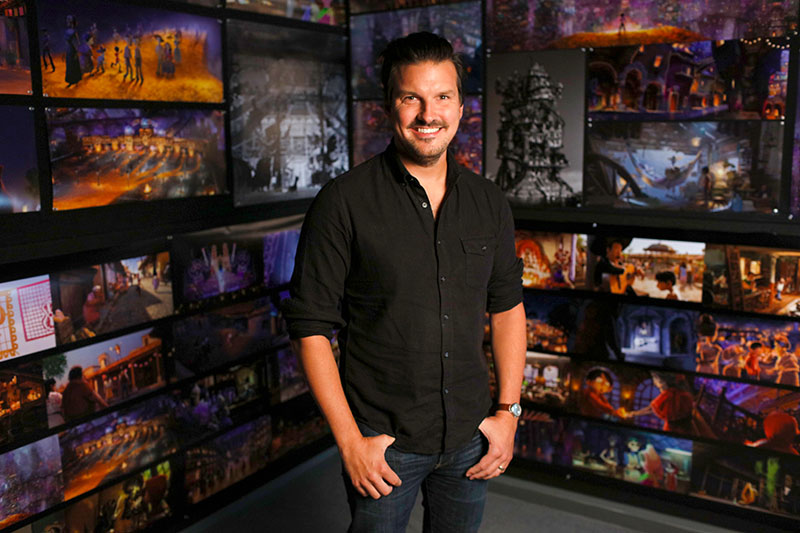When Dean Kelly was a kid growing up in Chelmsford, he was fascinated with the Disney movie Pinocchio, to the point that he wore out his family’s VHS tape of it. He’d not only watch the movie, but also play, rewind, and pause it, study the characters, and try to draw them himself.
“I’m just seduced by the art,” he says.
He was also intrigued by Disney’s indelible characters, like Baloo the bear from The Jungle Book, whose big personality felt as familiar to him as the people he knew in Chelmsford, like the coaches from his hockey or little league teams.
“That’s the thing about animation,” Kelly says, “that you can take a caricature of something we know in real life and put it in a story.” That’s exactly what he’s doing now as a story artist for Pixar Animation Studios. Kelly was the story supervisor for the Pixar film Lightyear, a prequel of sorts to the Toy Story movies, that tells Buzz Lightyear’s origin story (and stars another Massachusetts boy, Chris Evans, who voiced the title character).
As story supervisor, it’s Kelly’s job to work with the director and a team of story artists to “represent the visual look of the film and draw the script,” taking it from “script land” (i.e., what the director envisions) to a real, visual representation of the story.
“When we say draw the script, we get script pages, and then we use cinematic language—close-ups, wide shots—and we kind of draw the script out and then pitch it to the director,” Kelly says. “It’s up to the story artists to interpret the page and put it into visuals.” Kelly led the team of roughly seven to nine story artists in bringing that script to life over the four years it takes a Pixar movie to go from the germ of an idea to the big screen.
“We’re kind of at the forefront of coming up with ideas, and test-driving things,” he says. “But it’s my job to make sure that everybody’s just playing well together, and having fun with the project, and being engaged and inspired.”
While some of the scenes are more straightforward, others are open for the story artists to play with and interpret. If the script says, “Buzz walks into the room and strikes a pose,” for instance, the story artists can take that and run with it. Maybe Buzz struts into the room and flexes his muscles. Maybe he trips into the room for a bit of comedy.
Other times, the script will ask for a scene that’s just a single sentence on the page but ends up being fleshed out into several minutes of screen time, such as an action sequence. The script might read, “Buzz launches fantastically into space,” but the scene itself is a long, sci-fi–inspired journey of a pilot blasting around a star. “How do I take that and make that cinematic excitement, and make that something that people want to watch and see?” Kelly says.
Kelly says he put a lot of “reverence” into his work on Lightyear because of the indelible impression that watching the first Toy Story film made on him, calling Pixar his “true north” in terms of the artistry of animated film.
Characters like Buzz Lightyear “are landmark characters that are just so iconic,” so he wanted to do right by the fans.
“It’s an iconic character, and I jumped on it,” he says. “To work on a Buzz Lightyear origin story, that’s like, yes, let’s do that.”
Although Kelly has worked as a story artist on other Pixar movies, including The Incredibles 2, Coco, and Monsters University, Lightyear marks his first outing as the story supervisor on a film. And that title also meant that he got his first individual title card in the movie’s credits. He says such recognition is a “huge honor,” especially at a place like Pixar.
“I grew up loving Disney and wanting to be involved with Disney,” he says. “To have my individual name out there where my folks don’t have to sit through the [credits] crawl . . . it’s a great kind of celebratory thing.”

